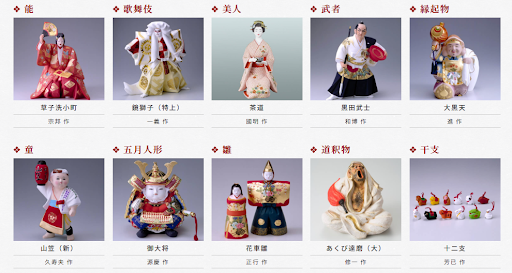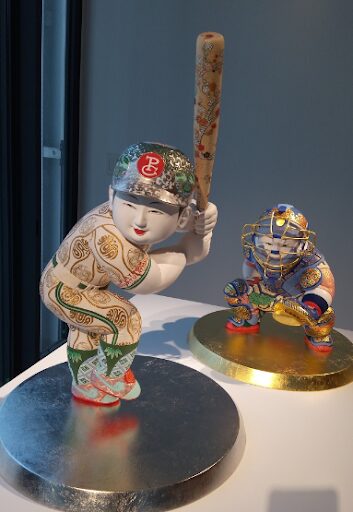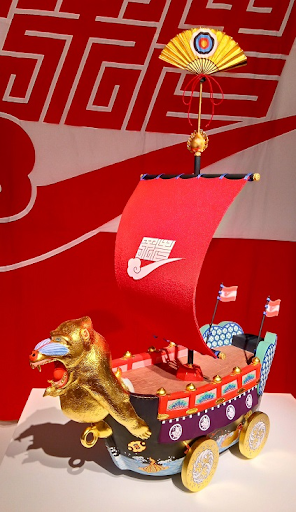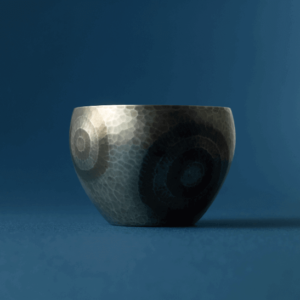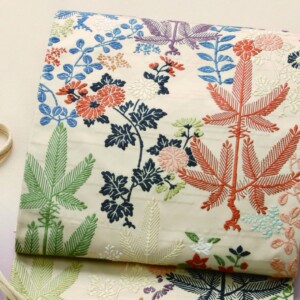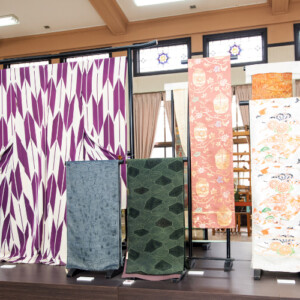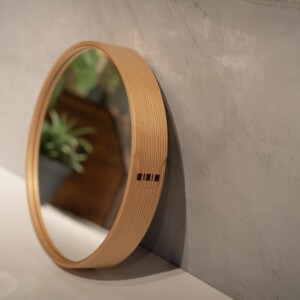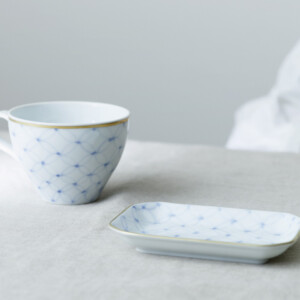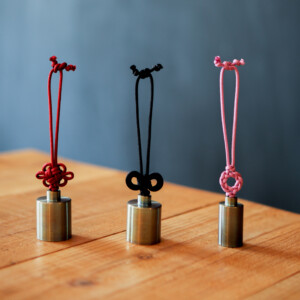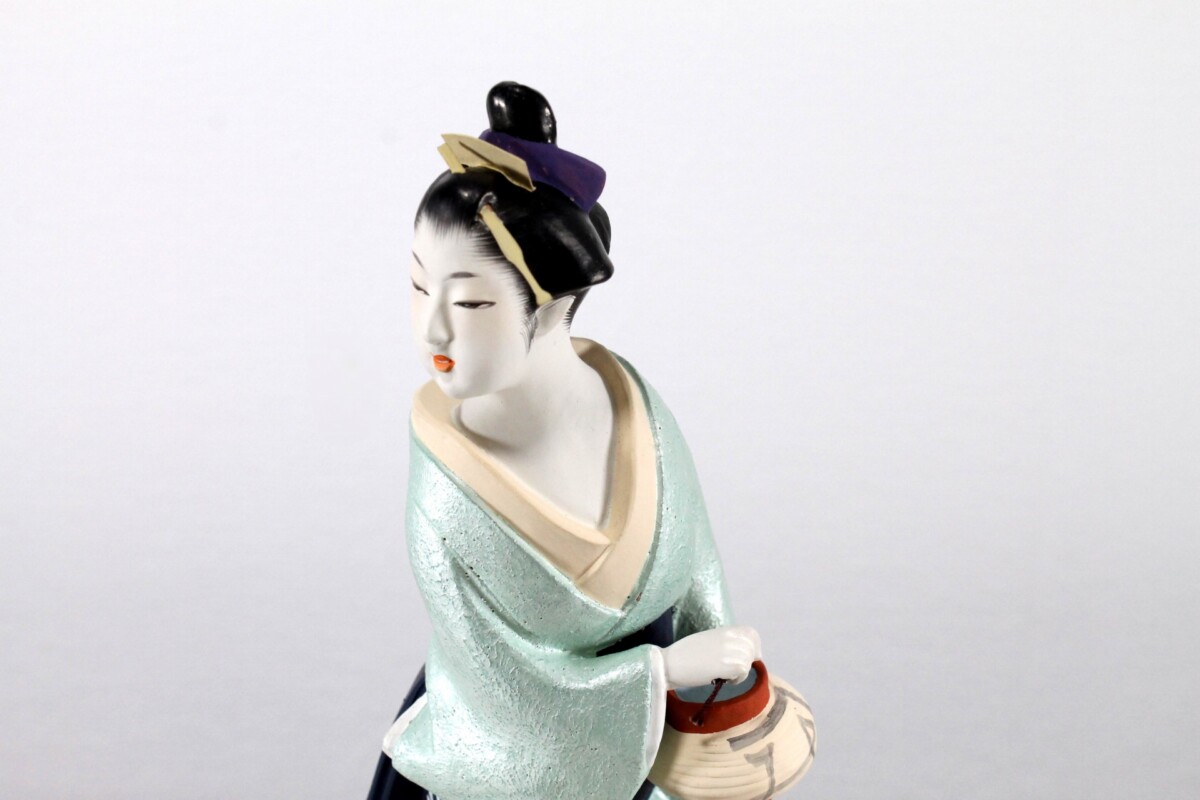
Explanation of the history, characteristics, and appeal of Hakata dolls! Let’s learn about traditional crafts!
Hakata dolls are a traditional craft produced mainly in the Hakata district of Fukuoka Prefecture. A wide variety of dolls are produced, ranging from traditional subjects such as Noh, Kabuki, and beautiful women to modern designs.
Many people are fascinated by the cute appearance and unbelievable beauty of these unglazed dolls. This article introduces the history, characteristics, and charm of Hakata dolls.
What are Hakata dolls?

Hakata dolls are a traditional craft produced mainly in the Hakata area of Fukuoka Prefecture.
It is so famous as a representative souvenir of Fukuoka that it is sung in one of Fukuoka Prefecture’s most popular folk songs, “When I came to Hakata, I came alone, but when I return, I will be accompanied by a doll and two people” in Sho-cho-Hakata-bushi.
There are a variety of dolls, from cute little things that can be bought for a reasonable price to magnificent dolls that can cost several hundred thousand yen.
Hakata dolls have a history of about 400 years.
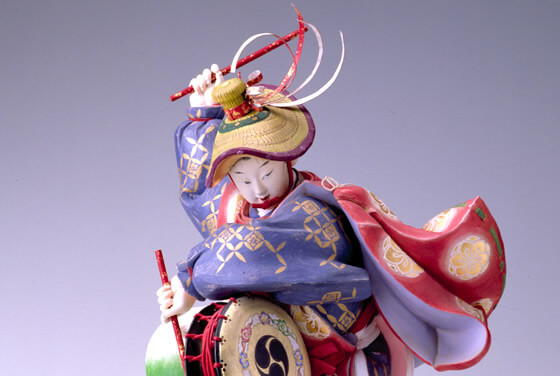
The history of Hakata ningyo can be divided into three main categories.
The Beginning of Hakata Dolls
The history of Hakata ningyo dates back to 1600, when Nagamasa Kuroda entered Chikuzen (present-day Chikushino City, Kasuga City, and other surrounding areas in Fukuoka Prefecture), and it is said to have become widespread.
When Nagamasa Kuroda ruled Chikuzen, many craftsmen were gathered from all over the region. One of these craftsmen, Soshichi Masaki, began making Hakata dolls from clay.
In addition to Soshichi Masaki, other craftsmen such as Kichibei Nakanoko and Takehei Shiromizu were also active, and Hakata dolls came to be distributed throughout the country.
Reference source: Hakata Doll Manufacturers Cooperative Association
Reference source: Special exhibition | “Soshichi Pottery,” a phantom of Hakata dolls
From Japan to Overseas
In the Meiji period (1868-1912), Hakata dolls began to attract attention not only from Japan but also from overseas. This was triggered by the “Third National Industrial Exhibition” held in 1890.
Hakata dolls, Hakata textiles, and other specialty products of Fukuoka Prefecture were exhibited at the Third National Industrial Exposition, and attracted so much attention that they were featured in advertisements at the time.
Hakata dolls were also highly acclaimed at international expositions such as the Paris Expo, and the name “Hakata dolls” became widely known and were exported to overseas markets.
Reference source: Expositions in the Meiji Era – Their Utility and Influence – | Archives | Fukuoka City Museum
Hakata Dolls Today
Hakata dolls were designated as “traditional crafts” by the Minister of Economy, Trade and Industry in 1976. 400 years have passed, and you can still encounter Hakata dolls in every corner of Hakata today.
Popular not only in Japan but also overseas, these dolls continue to be loved as good luck charms, souvenirs, and gifts.
Characteristics of Hakata dolls
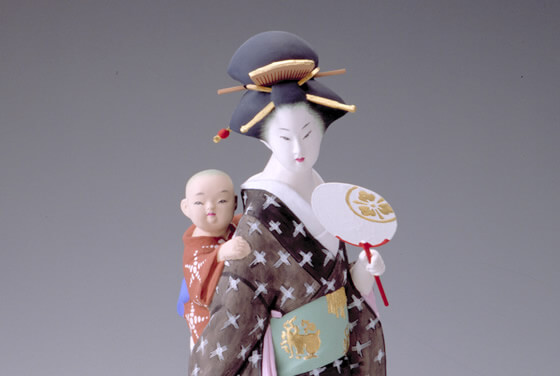
Hakata ningyo dolls are characterized by the various facial expressions that vary from one Hakata ningyo doll maker to another. The highly realistic expressions are so beautiful and fascinating that you can’t help but fall in love with them.
The dolls are so dynamic that it is hard to believe that they are unglazed dolls, and they seem as if they could start moving at any moment. One of the features of these unglazed dolls is the delicate and varied colors and beautiful hues.
The warmth of clay, which is not as cold as ceramic dolls, can be felt, and the simple warmth and gentle atmosphere of the dolls will soothe the hearts of those who see them.
The charm of Hakata dolls with a variety of expressions
There are three main attractions of Hakata dolls. Let’s take a look at the charms of each.
Warmth that comforts the viewer
As mentioned above, the charm of Hakata dolls is that they have a warmth that soothes the hearts of those who see them. Some people may have a prestigious image of Hakata dolls, with their tokonoma (alcove) and display shelves.
However, today’s Hakata dolls come in a wide variety of types and can be used as ornaments or decorations in living rooms, entryways, bedrooms, and anywhere else.They are not bound by conventional concepts and can be placed in either Japanese or Western style without feeling out of place, gently soothing the people who live in them.
Various genres suitable for modern culture
Many people probably think of traditional genres such as Noh, beauty, and kabuki when they think of Hakata dolls. For example, you may imagine the following Hakata dolls.
Today, however, there are many unique Hakata dolls. Take, for example, the work of Hakata doll maker Hiromine Nakamura, who creates modern-style Hakata dolls.
.
Hirofine Nakamura’s works are based on the concept of “if a dollmaker from the Edo period were to travel back in time to the present.”
You will find a different charm from traditional Hakata dolls. The modern style of the dolls also makes them an opportunity for young people to become interested in Hakata dolls.
Traditional Crafts at Reasonable Prices
Many people think of traditional crafts as expensive. However, Hakata dolls, despite being a traditional craft, can be purchased for only a few hundred yen.
Of course, there are many expensive pieces that cost several hundred thousand yen. However, one of the charms of Hakata dolls is that they can be easily purchased as souvenirs, gifts, or good luck charms.
Conclusion
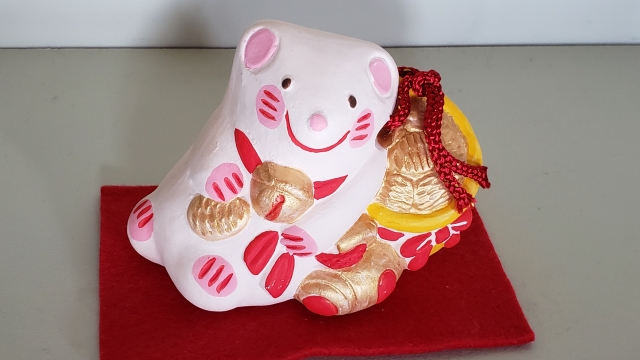
Hakata dolls are a traditional craft with a history of nearly 400 years. The charm of Hakata dolls lies in their dynamism, the variety of their expressions, and the warmth of the clay, as if they are about to start moving.
In addition to traditional designs such as Noh, beautiful women, and Kabuki, there are also modern works such as animals and baseball players.
Please take a look at the Hakata dolls that continue to be loved to this day.



